Are Toxic Mold Spores Making You SIck?
4/29/2022 (Permalink)
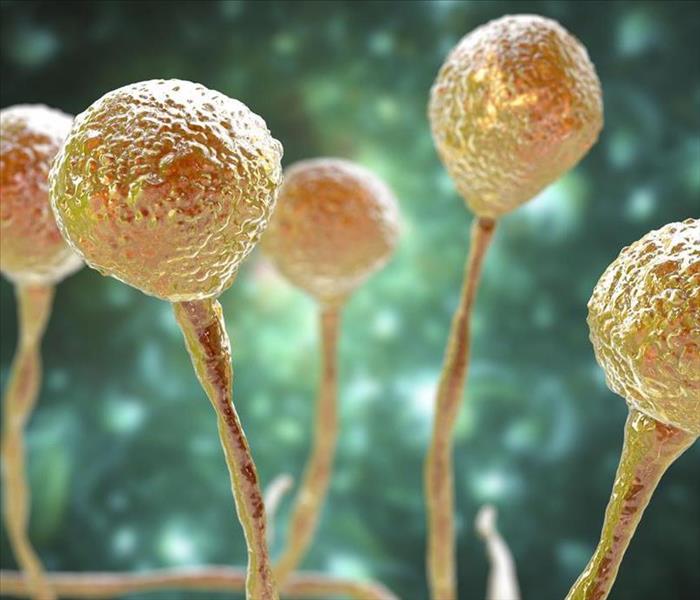 Mold spores can be toxic. SERVPRO Tamarac is qualified to safely remove them.
Mold spores can be toxic. SERVPRO Tamarac is qualified to safely remove them.
Mold can be found in residential and commercial locations. Toxic mold can grow even at low temperatures. In the winter, mold usually grows in uninsulated areas that aren’t heated. Heated air rises to cold, therefore under-insulated places like the attic and can cause condensation allowing mold to grow. Cold temperatures can temper mold growth, but won’t kill spores. If you have a mold problem in the cold weather months you best believe it will worsen in the dog days of summer.
Mold, while not a scientific term typically, is best used to describe multiple types of fungi is ugly, furry, and oftentimes smelly. Found both indoors and out, toxic mold is unpleasant and unsightly.
Positively speaking, molds also create penicillin and cheese producing yeasts used to make bread, beer and wine. Mold spores are pretty much everywhere there’s moisture.
Consequently, moisture creates mold and if you don’t want mold you need to get rid of the moisture that’s creating it. Damp environments are the perfect place for mold and fungi to live. Whether in basements, attics, garages, or under sink cabinets mold can be found along with these:
- Bacteria
- Dust mites
- Bi-products of bacteria
- Airborne chemicals/gasses
Ugly mold and musty odors are the bi-product from the breakdown of matter. Anything it grows on can pose potential health problems and structural damage. Mold can cause allergies, infections and at its worst, a sick building that can affect quality of life. When people spend time in an environment, either work or home, where mold or fungi are present, they can experience respiratory problems. Respiratory issues such as asthma, headaches, infections, and other symptoms are common.
Mold remediation expert, Nate of SERVPRO Tamarac, gives us some perspective, “If you're experiencing respiratory issues with no known cause and, you are concerned about mold, you can have the moist areas tested to determine the mold species by a professional hygienist. Large amounts of mold will require specialized techniques. Personal protective gear is necessary for proper and safe removal. Hiring a professional to remediate the mold based on testing is the best course of action. Remediation is critical to stopping the growth of mold and avoiding its return”.
Furthermore, any mold professional should insist on a test by a mold hygienist. The test will reveal the type of mold you are dealing with and let you know if you need a professional to then remediate the mold going forward. It’s important to hire an expert mold remediation team like Advance Restoration, or one that will:
WHAT TO EXPECT FROM A MOLD REMEDIATION PROFESSIONAL
- Proper safety PPE equipment
- Containment to Isolate mold work area
- HEPA air scrubbers and HEPA vacuums
- Commercial Strength dehumidifiers
- Discard moldy porous building materials
- Anti-microbial disinfectants to clean and sanitize
- Professional sealants to encapsulate treated areas
Commercial mold is just as concerning as residential. Contact us today for a free estimate.
SERVPRO Tamarac 954-960-5322
Business Flooded. Can the Carpet be saved?
1/10/2022 (Permalink)
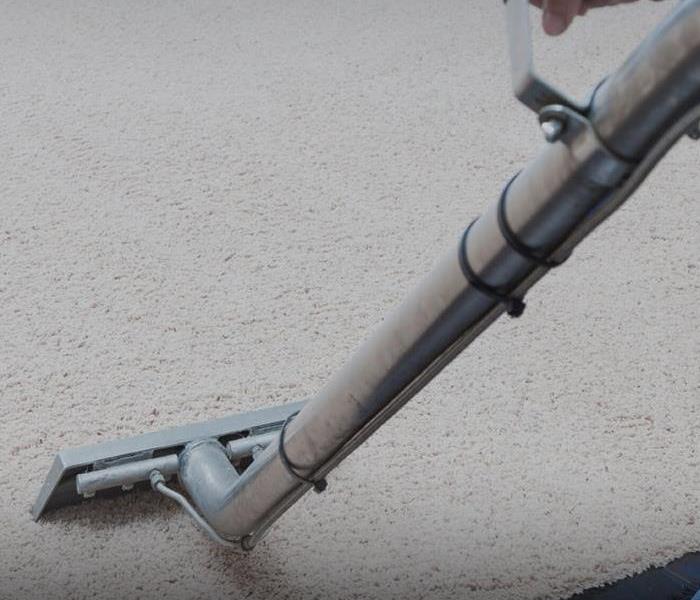 Carpet flooded
Carpet flooded
Does Carpet Need to Be Replaced After a Flood?Disaster strikes! A storm came through and flooded your business and now you need flood water damage restoration. But your business has many different parts. What is restorable and what needs replacement? For example, can you save carpet after a flood?
The answer is usually ‘no’. You should replace the carpet after a flood. If you don’t, you could be watching for signs of mold under the carpet in the coming days.
Your Flood Water Damage Restoration Experts
There could be some rugs and other carpets that don’t use padding. For example, a throw rug for a hardwood floor could be savable depending on the damage. Glue in office carpeting may also be salvageable. The main problem with installed carpet replacement is the padding. Padding degrades in the water much quicker than carpet fiber. If your carpet was in the water for less than 24 hours, there is a slight chance of salvage. Even this depends on the water’s categorization:
Category 1 Flood Water
Comes from clean water such as broken water lines that move water into your home.
Category 2 Flood Water
Is dirty water from your sewer backing up or the toilet overflowing?
Category 3 flood waterIs the most serious. This occurs when a sewer line breaks and floods your home.
How Long Does It Take to Dry Out Water Damage?
With the correct water damage drying equipment, getting back to normal is a matter of hiring professionals. After inspections and creating a plan of action, experts differentiate the savable from the destroyed.
Flood water damage restoration requires experts that know how to get you and your family back to normal. From carpet flood restoration to home repairs, our experts put your home back the way it was.
How Soon Does Mold Grow After a Flood?
For mold removal restoration, keep in mind mold can begin developing in 24-48 hours. The softer and more porous something is the more prone it is to mold formation. Remember, speed is key. The quicker you start drying out your house the safer it will be for everyone.
Call Someone Who Knows About Restoration After a Flood
SERVPRO N Lauderdale / W Tamarac knows how to bring your business to preloss condition.
Call SERVPRO today 954-960-5322
Commercial Building Fire Cleanup
8/24/2021 (Permalink)
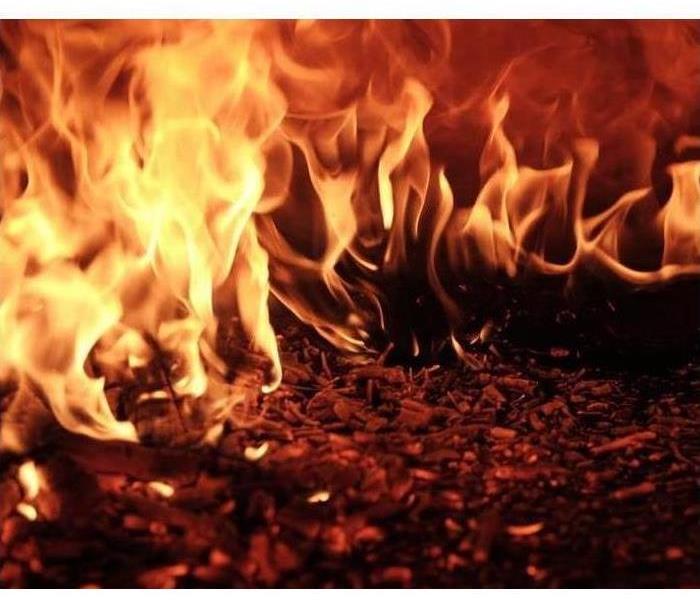 What do you do after the fire gets put out?
What do you do after the fire gets put out?
Fire damage to a commercial building is a devastating experience. After the fire trucks leave, your property will likely suffer from not only fire and smoke damage but also widespread water damage and flooding from firefighting efforts. Therefore, immediate action is crucial to minimize business interruption, reduce lost revenue and productivity.
But trying to clean up the aftermath may be the last thing you feel like doing on your own. When fire, smoke and soot damage are left behind, it can create unpleasant and permanent problems if not properly addressed. Especially considering that smoke and soot from even a small fire can permanently damage contents throughout the building and may cause odors that resurface for years.
SERVPRO of North Lauderdale W Tamarac understands how disruptive fires can be for business owners, their tenants and even their customers. So, before you risk doing more damage to your most valuable business assets by attempting to clean it up yourself, you should consider hiring an experienced company like SERVPRO. Our technicians have the training, tools, equipment, and experience to handle any fire damage incident to a commercial building. They can respond immediately to begin the work to restore your business to be back and up and running in no time!
Call now 954-960-5322
Does Your Business Have An Online Emergency Ready Plan?
8/24/2021 (Permalink)
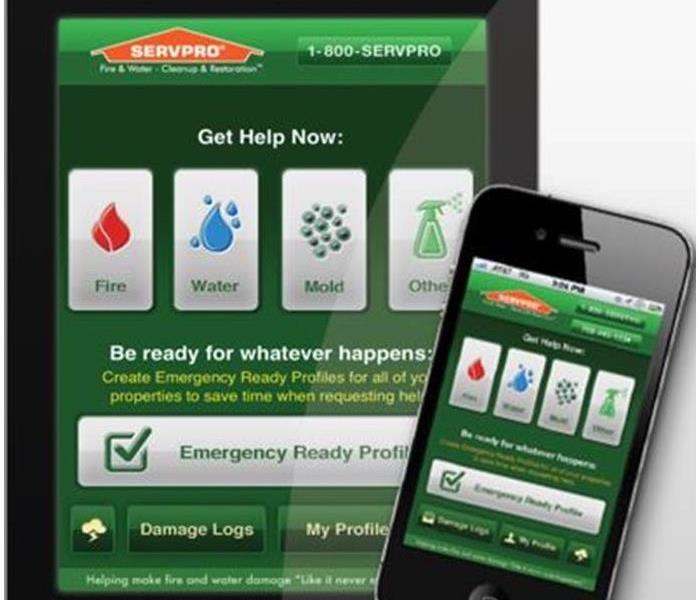 An Emergency Ready Plan can save your business time and money.
An Emergency Ready Plan can save your business time and money.
At SERVPRO of N Lauderdale/W Tamarac we know the impact on a business when they experience a water, fire or mold loss. Our goal is to mitigate damage and get you back up and operating as soon as possible.
One of the ways we help in this area is with SERVPRO's E.R.P (Emergency Ready Plan). This is a plan we offer at no cost to Commercial Properties; Assisted Living Facilities; Schools; Government Buildings; etc. This digital app can be accessed by your staff and enables immediate access to emergency numbers; water valve shut-off location(s); gas shut-off location; etc. It's simply another way SERVPRO of N Lauderdale/W Tamarac works to help make water/fire/mold damage "Like it never even happened."
Call us today and let's schedule YOUR facilities Emergency Ready Plan.
SERVPRO of North Lauderdale/West Tamarac
954-960-5322
Flushable Wipes and Water Damage Restoration
4/24/2021 (Permalink)
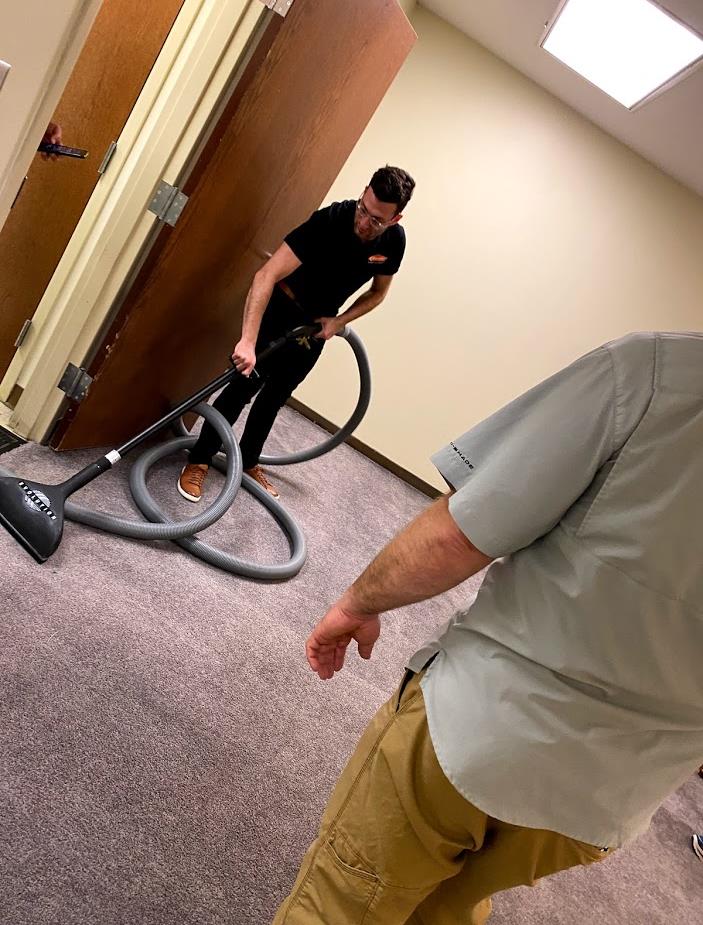 Flushing wipes down the toilet can cause expensive damage to your home and business.
Flushing wipes down the toilet can cause expensive damage to your home and business.
Some municipalities say they are facing a growing problem: More “flushable” wipes being disposed of down toilets are clogging pipes, jamming pumps and sending raw sewage into homes causing water restoration demand to soar and endangering waterways.
Utilities have urged customers for years to ignore “flushable” labels on popular wipes used by nursing home staffs, potty-training toddlers and people who prefer something more durable than toilet paper. This has been a growing problem in recent years. However, some utilities say their wipe troubles significantly worsened a year ago during a pandemic-induced toilet paper shortage, and have are still causing havoc with no end in sight.
They say some customers who resorted to baby wipes and personal hygiene wipes have stuck with them long after the toilet paper shortage ended. Another theory: People who wouldn’t take wipes to the office are using more while working from home.
Another faux-pas that is compounding the woes: More disinfectant wipes are getting improperly flushed, utilities say, as people sanitize counters, light switches and doorknobs. Paper masks and latex gloves being thrown into toilets and washed into storm drains also are jamming sewer equipment and causing water damage in homes. Needing water restoration after a backflow of raw sewage into your home can lead to other issues that may require expensive mold remediation.
At a Maryland wastewater pumping station, about 700 tons of wipes were removed last year. This was a a 100-ton leap over 2019. Utilities say the wipes twist into grotty chunks, either in a home’s sewer pipe or miles down the line. They then gel with grease and other cooking fats improperly sent down drains to form sometimes massive oily globs of clothlike material and fat that block pumps and pipes, sending sewage backing up into homes and waterways.
In Charleston, S.C., the utility company paid an additional $110, to prevent and clear wipe-related blockages and expects to do so again this year. Wipe-catching screens that used to need maintenance once a week are requiring it three times a week, officials said.
There are now multiple lawsuit lawsuits against wipes manufacturers with labels claiming that the wipes are flushable. One stemmed from a 2018 blockage in which divers had to swim down 90 feet through raw sewage into a dark wet well to remove a 12-foot-long mass of wipes from three pumps.
In the Detroit area, one pumping station averaged about 4,000 pounds of wipes collected weekly after the pandemic began — four times as much as before, officials said.
Washington D.C. has not faired any better than the rest of the country. Their Pumps at the Blue Plains Advanced Wastewater Treatment Plant in Southwest Washington are part of the largest advanced wastewater treatment plant in the world. and less vulnerable to debris, officials said, but the utility continues to see wipes blocking pipes.
So what is the culprit? Who is to blame? Wipes? Officials in the nonwoven fabrics industry say their wipes have gotten a bad reputation from people flushing baby wipes, sanitizing wipes and others that aren’t meant for toilets.
The recently established Responsible Flushing Alliance, funded by 14 wipes manufacturers and suppliers, supports state legislation that would require “do not flush” labels on the 93 percent of wipes sold that aren’t designed for flushing.
Last year, Washington state became the first to require the labels. Five more states — California, Oregon, Illinois, Minnesota and Massachusetts — are considering similar legislation, according to the National Association of Clean Water Agencies.
Their goal is to help people understand the vast majority of these products that keep our homes safe are not intended to be flushed. The flood damage can be extensive and the water damage repair reach into the thousands of dollars per property.
However, 7 percent of wipes sold as “flushable” have plant-based fibers that, like toilet paper, break down when flushed and become grotesque clothy fat globs. Studies have found that 1 to 2 percent of the wipes were designed as flushable, were probably getting tangled quickly before they could disintegrate.
The current roadblock in finding a solution is that the wipes industry and city utilities continue to disagree on testing standards for how quickly, and how much of the actual product, should have to break apart to be considered “flushable.”
Utility officials say they fear the conundrum will outlast the pandemic as some consumers form new habits. The Association of the Nonwoven Fabrics Industry said sales of disinfecting and flushable wipes have soared about 30 percent and are expected to remain strong.
As of early April, sales of bathroom cleaning wipes were up 84 percent, and “bath and shower” wipes were up 54 percent compared to the 12-month period ending in April 2020, according to Chicago-based NielsenIQ, which tracks consumer behavior. Sales of premoistened wipes for toilet use had jumped by 15 percent as of April 2020 but have dropped slightly since.
In the meantime, some flushable wipes manufacturers are under fire with class action lawsuits across the country for wreaking havoc on city municipal systems. Other manufacturers are seeing lawsuits not just for the fact that they don’t simply degrade quickly in the sewer systems, but that some of their products might contain a strain of antibiotic-resistant bacteria known as Pluralibacter gergoviae which was detected during product testing. This strain of bacteria is an opportunistic pathogen that can cause health effects in humans. Individuals who have a weakened immune system, suffer from pre-existing conditions, have been treated surgically, or belong to another sensitive group of persons are at particular risk of harm.
All in all, the verdict is out on the future for disposable wipes across the board. Changes must be made and each municipality has its own idea of exactly what those changes should be.
Closer to home, the wastewater division of Greater Ft. Lauderdale asks that everyone be careful what they flush. Items that should not be flushed include paper towels, disposable cleaning rags, dust rags and diapers. “Flushable wipes” really aren’t. All these products get tangled in impellers at the pump stations, slowing their capacity and, in some cases, disabling them completely until repairs are made.
Across the country, utilities are asking customers to stick with the “three P’s” — pee, poop and (toilet) paper — when they flush.
City municipalities ask that people use the wipes as needed. But never flush them down the toilet. Just put them in the garbage instead. Those with septic systems may already know the havoc wipes can wreak on delicate septic systems and plumbing. The rest of us must take heed.
Even though we, at SERVPRO of North Lauderdale and West Tamarac are always happy to clean up after an overflow in your home or business from flushing one too many wipes down the toilet. We must also encourage everyone to do their part in keeping our sewage systems safe and clean from debris-especially wipes.





 24/7 Emergency Service
24/7 Emergency Service




